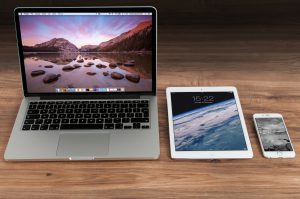Many articles have been written over the years explaining the common condition of dry eyes. In short, dry eyes happen when the quantity and quality of your tears decline, causing an itching, burning sensation. There are various causes of this condition, everything from aging to side effects of certain medications to contact lens use to environmental factors like wind and dry climates.

But there’s a new culprit in town: digital devices.
Smartphones, computers, tablets, and handheld gaming devices have all entered into the equation for causes of dry eyes. And it’s affecting all generations.
The latest Pew Research shows that since 2014 (when our article on dry eyes first appeared), 58% of the adult population in the United States owned a smartphone. By 2019, that number jumped significantly with 93% of Millennials (ages 24-39), 90% of Gen Xers (ages 40 to 55), 68% of Baby Boomers (ages 56 to 74), and 40% of the Silent Generation (75 to 92) owning smartphones.
Eye-care professionals have seen a similar jump during the last several years with patients who are complaining about dry eyes, with 88% of those surveyed citing smartphone usage as the cause.
So how are digital devices contributing to the problem? It’s simple, really. People are staring at their screens for up to 10 hours a day, which means they’re not blinking as much.
Blinking is vital to tear production. The American Academy of Ophthalmology explains on their website that blinking spreads a film of tears over your eyes that coats and protects them. When you don’t blink as much, your eyes – you guess it – dry out. The longer this happens, the more of a problem it becomes, and eventually, you may need to apply artificial tears in order to lubricate your eyes, amongst other pharmaceutical remedies.
So the best defense against this latest culprit to dry eyes is to blink more and limit how much screen time you are giving to all of your digital devices.

